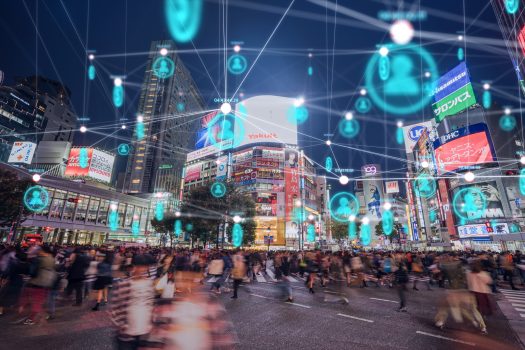LoopMe's Alberico de Nardis on Trends in APAC, AI's Role in Digital Marketing, and ATS Singapore
by on 17th Aug 2023 in News

In association with LoopMe.
With ATS Singapore fast approaching, and ahead of their appearance at the event, LoopMe's head of SEA and ANZ, Alberico de Nardis, sat down with ExchangeWire to discuss future trends within APAC, the importance of Ad Net Zero, M&A opportunities in ad tech, and more.
In what ways do you believe AI can be utilised within the ad tech industry to optimise campaign performance and outcomes?
I don’t believe this is breaking news, but let’s recap anyway: artificial intelligence has an unmatched ability to process and analyse massive amounts of data in real-time, and when this is paired up with its capacity for pattern recognition and intelligent decision making, it makes AI an immensely powerful tool to enable a vast range of capabilities.

The potential for AI to transform our industry is evident, and there are far too many applications (both existing and upcoming) to refer to in this answer. Let me focus on just a few that truly help us optimise campaign performance, and drive effective business outcomes.
Predictive Audiences: Identification, Segmentation, and Targeting
We know that many people are still building audiences based on historical data (often lookalike models), but I would argue that this tactic simply doesn’t stack up to predictive audience analytics.
Historical data solutions like lookalike modelling try to understand which audiences are most like the top performing segments from past campaigns - which means it takes a lot of time to gather the first party data required, and operates on the assumption that consumers will continue to behave in the same way as they did in the past. This is not the most efficient way to identify and segment new audiences.
On the other hand, AI-based predictive audience models are constantly learning about existing and potential customers. What do they like and why, what are their spending habits, how do they consume media, when might they be most receptive, and so on. The more data that gets collected, the stronger the AI’s understanding becomes, and the more effective it can be at building audiences based on the propensity for consumers to take certain actions in the future.
Real-Time Actionable Insights to Drive Key Outcomes
In order to genuinely understand how a brand’s advertising activity is performing, ad tech companies require comprehensive analysis in real-time with which to identify actionable insights to influence the optimisation strategy.
It would be impossible for any team of humans to keep up to speed with the data coming in on a single campaign, let alone the thousands of campaigns running any given Sunday. Therefore, companies like LoopMe have turned to artificial intelligence to be able to look at every individual and consequential data point, and determine in real-time whether the key outcomes are being driven.
To summarise the above, by harnessing the power of AI, we can unlock the power of predictive audiences and real-time optimisation to drive the key results that we are held accountable to. It also enables us to guarantee reduced costs, less wastage, and a much improved ROI in return - with industry statistics demonstrating how AI-driven real-time optimisation drove a 40% reduction in conversion costs, and recent LoopMe studies illustrating up to 10x increases in brand consideration and purchases intent metrics.
The advertising industry has seen a big surge in M&A in recent years - why do you think this is?
Interestingly, LUMA Partners reported that M&A in ad tech slowed considerably in 2022, but we must keep in mind the fact that 2021 was a particularly strong year. Even though economic and global market uncertainties continue, we should still expect to see a rebound in activity in 2023 and 2024.
In general, M&A activity can be attributed to a number of factors, including the need for businesses to adapt, innovate, and position themselves strategically to capitalise on emerging opportunities, and successfully navigate the threats in our rapidly changing industry.
Global expansion and regionality has been a clear theme in recent years, with companies needing to think regionally to fill the gaps in their offerings if they want to fulfil their global goals. Most regions are greatly different to one another, with regards to what type of ad tech the local consumers are ready for, and even what brands are ready to accept. Great technology is all over the globe today, and we’ve seen brilliant tech from SEA, Australia, Isreal, and LATAM acquired from the other side of the planet, and benefit both parties greatly through diversification of services and consolidated market share.
We discussed AI earlier, but we cannot dismiss the fact that this industry will continue to rely heavily on skilled professionals, and balancing the two together will continue to be key. As we can all agree that people and technology need to work hand in hand to drive the best results, M&A will continue to keep a keen eye on talent as well the tech.
LoopMe recently joined Ad Net Zero - how can the ad tech industry strive to be more sustainable in a practical way?
First and foremost, I’d say that the majority of the industry simply is not talking about this. Sustainability is a conversation that is still being kept in the board room, or on panels at industry events. It needs to be implemented at the grassroots level within all parties, and be a genuine consideration every step of the way, not just for the ad tech partners. I’ll use this moment to request that advertisers and agencies start by always asking your partners for a sustainable or regenerative offering.
As you mentioned, LoopMe has joined Ad Net Zero, having achieved net zero emission earlier this year with seven years to spare versus our initial target of 2030.
So from an ad tech point of view, there are a number of steps that can be taken to ensure we operate sustainably as an industry players.
- Start by doing an energy audit (and verify the results independently) to measure your carbon emissions. This is a scientific project, and it is impossible to go down this road without clear knowledge of that is going on behind the scenes.
- Work to reduce your carbon emissions as much as possible through both internal and external initiatives. For example, LoopMe reduced over 95% of our carbon emissions by transferring to the Google Cloud Platform, which is entirely carbon neutral and operates on renewable energy.
- You cannot reduce to 0%, so the next step is to remove what is left. Remove, through quality carbon removal projects, and not through ineffective carbon avoidance schemes.
- And finally, take it a step further and regenerate!
What future trends within the APAC region do you predict for the advertising industry?
I’m purposefully going to stray away from talking about the death of the cookie, dealing with privacy regulations, and traditional media revenue declining.
Instead, hoping not to sound like a broken record, I’ll start by commenting on how AI will clearly play an increasingly pivotal role in transforming the advertising industry, and not just within ad tech platforms. Advertisers, agencies, platforms, and more companies are all getting involved, and using AI to improve everything from how they do creative testing to how they work with influencers (search for Rozy in South Korea, or Ayayi in China). For us in APAC, across a range of nuanced markets with an array of languages and cultures, we may find it even more useful to be able to use AI to improve our capabilities around user segmentation, ad optimisation, budget allocation, ad personalisation, and more.
I am also very excited to see Live Commerce continue to grow, with APAC as its birthplace. Platforms like TikTok and Taobao have opened the door, and we’re peered in to see the potential of combining shopping with entertainment. A study by Bain & Company found that 39% of all e-commerce engagements in Southeast Asia now happen through Live Commerce. Brands getting involved early are seeing quite unbelievable results, and obviously there is still a lot of learning to go through as the phenomenon starts to take up further West.
With ATS Singapore right around the corner, what are you most looking forward to at the event?
The easiest question you’ve asked me all day! I’m looking forward to speaking to people, the ones I don’t usually get to listen to. I’m always fascinated to hear from advertisers coming in from around the region, and how each of their challenges differ, or from technologists with an innovative new solution, or learning about the latest conversations that keep our industry leaders up at night.
It’s going to be a fantastic few days - and I’ll look forward to seeing you all there!
Don't miss out on your opportunity to hear from LoopMe and other experts in ad tech - get your ATS Singapore 2023 tickets here.
Artificial IntelligenceATS SingaporeEvents








Follow ExchangeWire